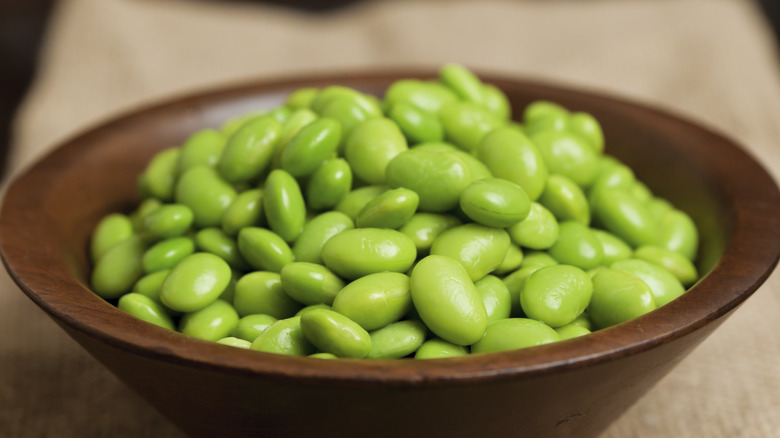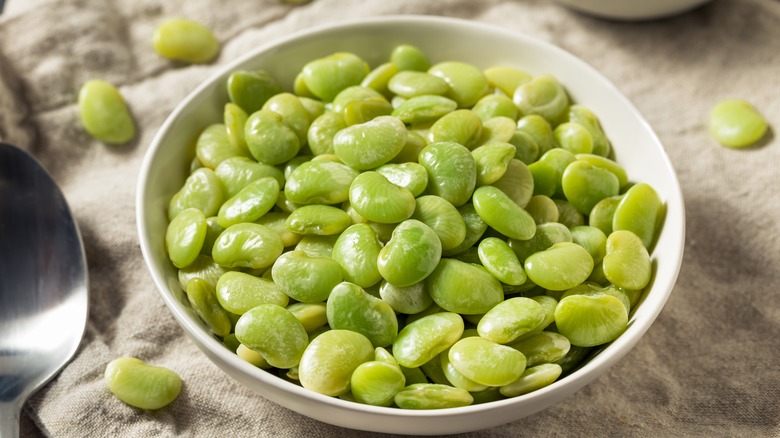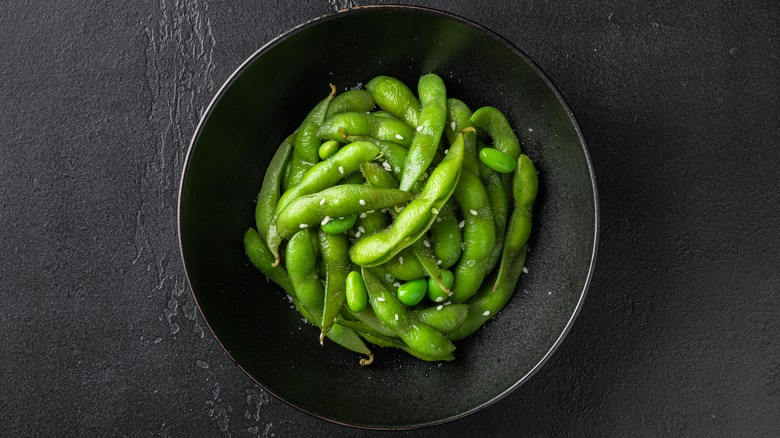Lima Beans Vs Edamame: They're Not As Similar As They Appear
Edamame is having a moment internationally. From Asian edamame salad to edamame guacamole, these small green beans can be used in all sorts of ways; you can even make an edamame burger if you're really feeling adventurous. But it's not the only green-colored bean that has a devoted following, as there are also lima beans. So how similar are these two different legumes? Not really similar at all, it turns out.
It's understandable why people would think lima beans and edamame must be closely related: They're both beans, they're both green, and you can use them in some of the same culinary applications. But that's about where the similarities start and end because the two couldn't be more different. They hail from entirely different continents, one is noticeably larger than the other, they don't taste the same, their textures are significantly different, and they have different nutritional profiles — in summation, the two are not very much alike in any way past a cursory glance.
Lima beans and edamame are vastly different
Lima beans, also known as butter beans, are named after the city of Lima, Peru — which is a pretty big clue about their origins. These South and Central American beans are relatively large, with a visible thin layer of clear skin and a pale green hue, along with a distinct kidney shape. Lima beans are naturally pretty firm, so they tend to be cooked thoroughly all the way through, rendering them soft and creamy (this is where that "butter beans" name comes from) with a starchy taste sort of like chestnuts. Nutritionally, they tend to be higher in carbohydrates and Vitamin C than edamame.
Edamame, by contrast, is visibly smaller and more vibrantly green than lima beans. Their name is a combination of the words for "branches" and "beans" in Japanese — which again, tells you exactly where they hail from, e.g. the opposite side of the world from lima beans. And surprisingly, edamame is just a soybean that's been harvested before maturity (hence the green color). Because their natural consistency is softer, they tend to be cooked less than lima beans — the goal is to maintain some slight crunch. They're also slightly sweet in comparison to the more starchy flavor of lima beans, and nutritionally, they have far more protein, vitamin K, and folate.
The two have both similar and different culinary usages
Edamame and lima beans do have some overlap in how they are served. You could make succotash, traditionally made with lima beans and corn, with edamame, for instance, including in a warm grilled corn and edamame succotash salad. The two can also both be made the stars of bean salads depending on what qualities you're looking for, and both can make for pretty classic components in a soup. While the two are significantly different, they share enough that there are times they could both work.
But beyond that, there are also ways in which you're unlikely to see them overlap. Steamed edamame, for instance, is very common as a restaurant appetizer, particularly still in its shell and coated in sea salt, while you're not likely to see lima beans as an appetizer snack, or served without a thorough cook-through. And in any dish where you really want that slight crunch edamame provides (a poke bowl is a good example here), you're not going to be able to use lima beans as a substitute. If you want a mashed bean dish, though, you're probably going to be reaching for the lima beans first. The key is simply knowing what you're personally looking for and playing to each bean's strengths.


